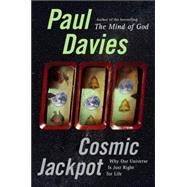
| Preface | |
| Acknowledgments | p. ix |
| A Note on Numbers | p. xv |
| The Big Questions | p. 1 |
| The Universe Explained | p. 18 |
| How the Universe Began | p. 49 |
| What the Universe Is Made of and How It All Holds Together | p. 85 |
| The Lure of Complete Unification | p. 103 |
| Dark Forces of the Cosmos | p. 116 |
| A Universe Fit for Life | p. 129 |
| Does a Multiverse Solve the Goldilocks Enigma? | p. 151 |
| Intelligent and Not-So-Intelligent Design | p. 191 |
| How Come Existence? | p. 222 |
| Afterword: Ultimate Explanations | p. 261 |
| Notes | p. 273 |
| Bibliography | p. 293 |
| Index | p. 297 |
| Table of Contents provided by Publisher. All Rights Reserved. |
The New copy of this book will include any supplemental materials advertised. Please check the title of the book to determine if it should include any access cards, study guides, lab manuals, CDs, etc.
The Used, Rental and eBook copies of this book are not guaranteed to include any supplemental materials. Typically, only the book itself is included. This is true even if the title states it includes any access cards, study guides, lab manuals, CDs, etc.